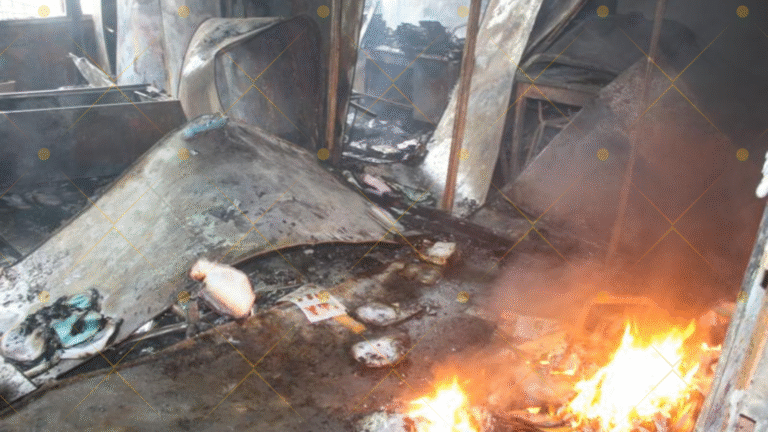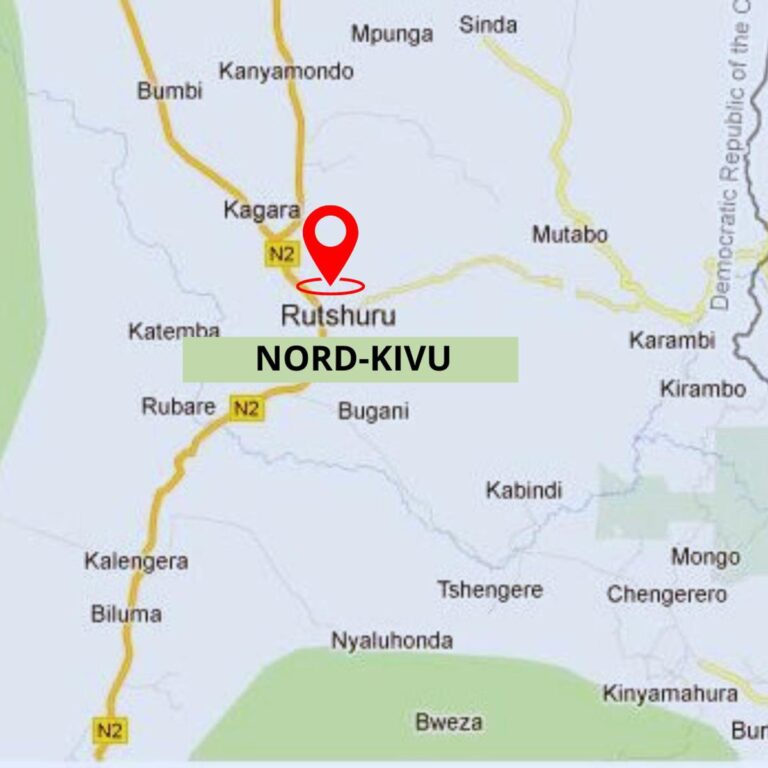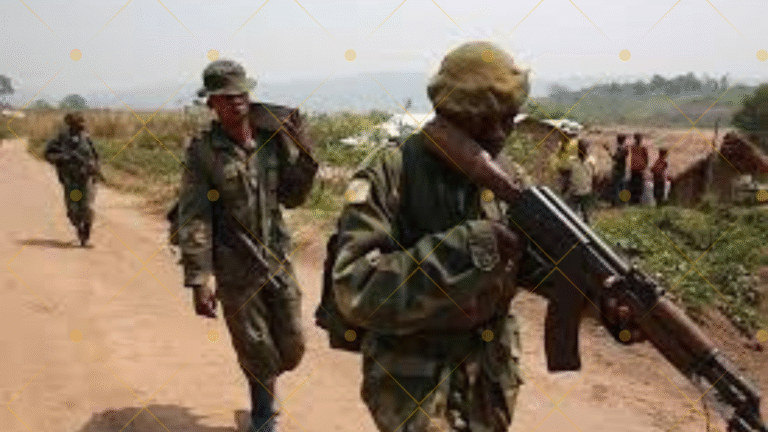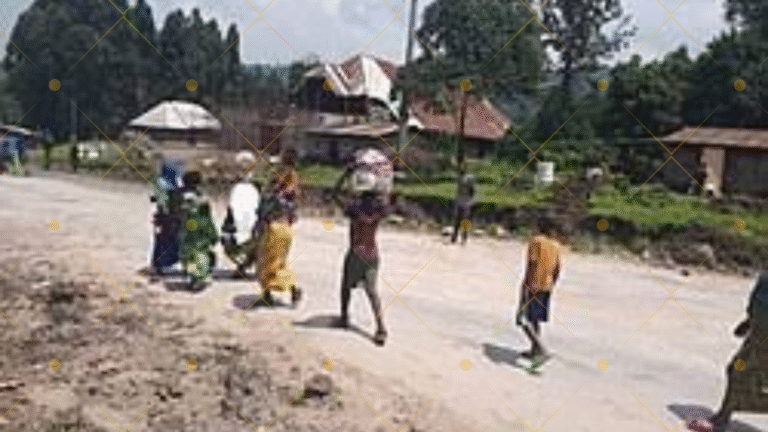

Outsourcing the battle against the M23 rebels to the undisciplined and uncontrollable Wazalendo armed groups could backfire on Congolese President Félix Tshisekedi. A recent report warns of the dangers associated with bolstering these armed factions and perpetuating the ongoing conflict.
The Congolese army’s repeated setbacks against the M23, which now occupies significant regions of North and South Kivu, have prompted President Tshisekedi to seek help from external sources. His attempts to rally support from various African regional forces, including the East African Community (EAC) and the Southern African Development Community (SADC), as well as Western mercenaries, have largely been unsuccessful. MONUSCO’s peacekeepers, tasked with maintaining an elusive peace and lacking an offensive mandate, have been ineffective in curbing the rebel advance, which resumed at the end of 2021. In light of these setbacks, President Tshisekedi made a controversial decision to delegate the fight against the M23 to a multitude of local armed groups, aiming to reinforce a Congolese army beleaguered by corruption.
Interestingly, these groups, now identifying as Wazalendo (Swahili for “Patriot”), were previously engaged in violent conflicts among themselves or against the national army over territorial control. They have now stepped into the role of auxiliaries for the Armed Forces of the Democratic Republic of Congo (FARDC). This precarious strategy of President Tshisekedi has been scrutinized in a new report from Ebuteli, a Congolese research institute focused on politics, governance, and violence. Titled “Fighting Fire with Fire in Eastern Congo,” the report delves into the history of the Wazalendo and the implications of this risky “externalization” of warfare by a president lacking viable military solutions.
A Framework for an “Armed Defense Reserve”
Using armed groups to fight other armed groups is nothing new in Congo. Researchers point out that in 1998, Kinshasa supported Mai-Mai and FDLR armed groups to fight the RCD, which was backed by Rwanda and Uganda. The DRC and Rwanda then joined forces between 2015 and 2020 to try to eradicate the FDLR, a group of former Rwandan genocidaires, using the NDC-Rénové. As for the Wazalendo, the term appeared in early 2023, after the resurgence of the M23 in South Kivu province, where they were fighting Rwandan-speaking Banyamulenge groups that the M23 announced it wanted to protect. The opportunity was too good to miss for Félix Tshisekedi to find new allies to try to defeat the M23. In the spring of 2023, Kinshasa decided to offer a “state” framework to these armed groups by creating the Armed Defense Reserve (RAD). The M23’s return to arms also “stoked nationalist, sometimes xenophobic, sentiment against communities perceived as foreign, particularly the Tutsi, Banyamulenge, and Hema, but also the Kinyarwanda-speaking population in the broadest sense,” points out the Ebuteli researchers. This is a godsend for Félix Tshisekedi, who is seeking to close ranks around his presidency, weakened by the conflict in the East.
Massive ammunition support
The report analyzes two armed groups of Volunteers for the Defense of the Homeland (VDP), the Wazalendo, based in two regions of North Kivu: in the Petit-Nord region around Goma, Masisi, Rutshuru, Nyiragongo, and Walikale, and then in the Grand-Nord region around Lubero. In the Petit-Nord region, Congolese army officers, often composed of ex-rebels, began to bring together local armed groups to fight the rebels. Meetings were held in May 2022, “when the Congolese army had already begun using armed groups, including the Nyatura and the FDLR, to counter the advance of the M23,” the researchers say. The FARDC provided massive material support to these VDP groups: “more than 1.1 million 7.62 x 39 mm cartridges (for AK47-type rifles) and nearly 800,000 7.62 x 54 mm cartridges (for PKM-type machine guns) from January to April 2024 alone.” Each VDP group maintains a certain autonomy of action, leading to a lack of coordination with the army and “skirmishes” between groups. This strategy of collaboration between the Congolese army and armed groups “has also offered a new lifeline to the FDLR, weakened in early 2021 by targeted joint operations by the RDF (Rwandan army, editor’s note) and the FARDC.”
“Fighters who are difficult to demobilize”
By creating the Armed Defense Reserve, some Wazalendo groups and local politicians thought they could gain access to positions in the regular army. For now, it is only a force intended to “assist” the Congolese army. However, it offers several advantages: positioning itself favourably to integrate the demobilization process (P-DDRCS), obtaining military training and remuneration, and finally being identified as a member of the Armed Reserve. This strategy encourages these militiamen to “bet on a military rather than a civilian future,” Ebuteli emphasizes. This incentive contradicts the government’s line, which rejects any integration of Amré groups into the FARDC. Finally, the report recalls the multiple risks of this outsourcing of violence, which has “reinforced the entrenchment of the conflict by recruiting fighters who will be difficult to demobilize.” Subsequently, “millions of weapons and ammunition have been distributed,” enacting a “militarization of society,” increasing the level of violence in the East. These groups “live mainly off the local population and then engage in extortion, a practice often accompanied by violence and abuse.”
What future for the Wazalendo?
The use of auxiliary armed groups, who often fight better and more than the regular army, makes the Congolese authorities dependent and indebted to these militiamen, who will certainly claim their dues at the end of hostilities. This recurring practice undermines any rapid resolution of the conflict by revitalizing and strengthening existing armed groups. The question is, what will become of these fighters after the war? Some Wazalendo groups have already taken a stand, declaring themselves, like the M23, “not concerned” by the ongoing peace initiatives between the DRC and Rwanda. What should be done with these militiamen, who have lived off racketeering and abuses with total impunity? Integrate them into the army, when it is precisely this “mixing” that has weakened the Congolese army? Demobilize them for a return to civilian life, when the resources to finance these programs are sorely lacking. “It’s challenging to answer,” says Reagan El Miviri, a researcher at Ebuteli. Not all are necessarily eligible for the Defense Armed Reserve. They are for the P-DDRCS, but is the political context conducive to it? Following the resurgence of the M23 and the subsequent remobilization, the demobilization program has virtually disappeared in the Petit Nord and South Kivu. However, it is clear that this is an issue that will have to be taken into account in any peace process. The future of the Wazalendo is part of the security equation that needs to be resolved. What formula will be chosen? We do not yet know. One thing is certain: “Support for these armed groups constitutes a heavy political burden for years to come,” concludes Ebuteli’s report.



